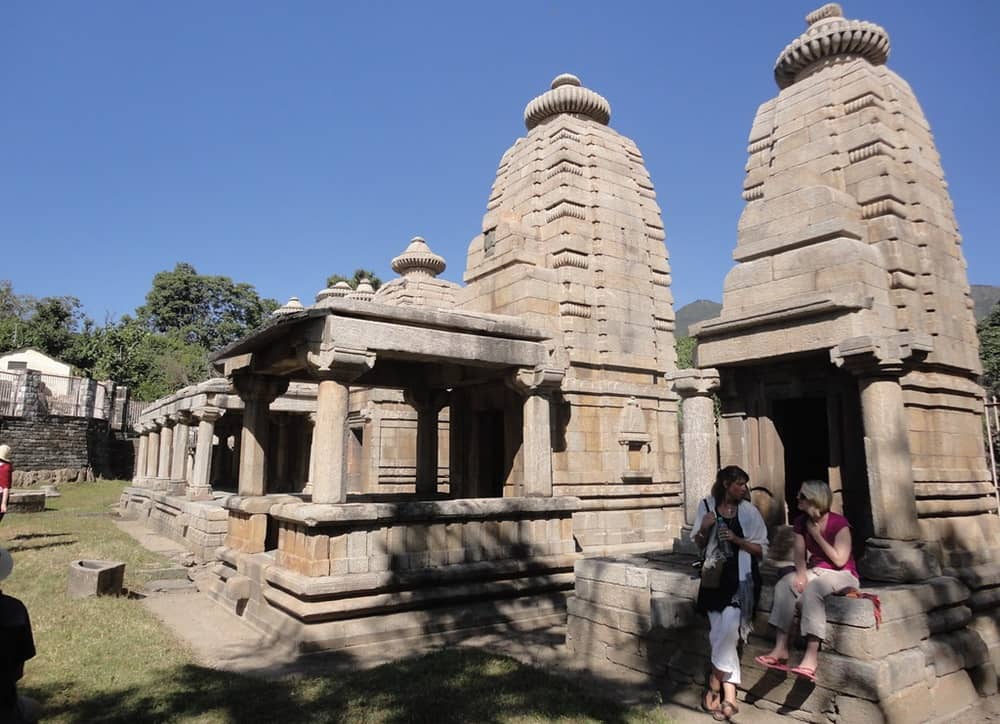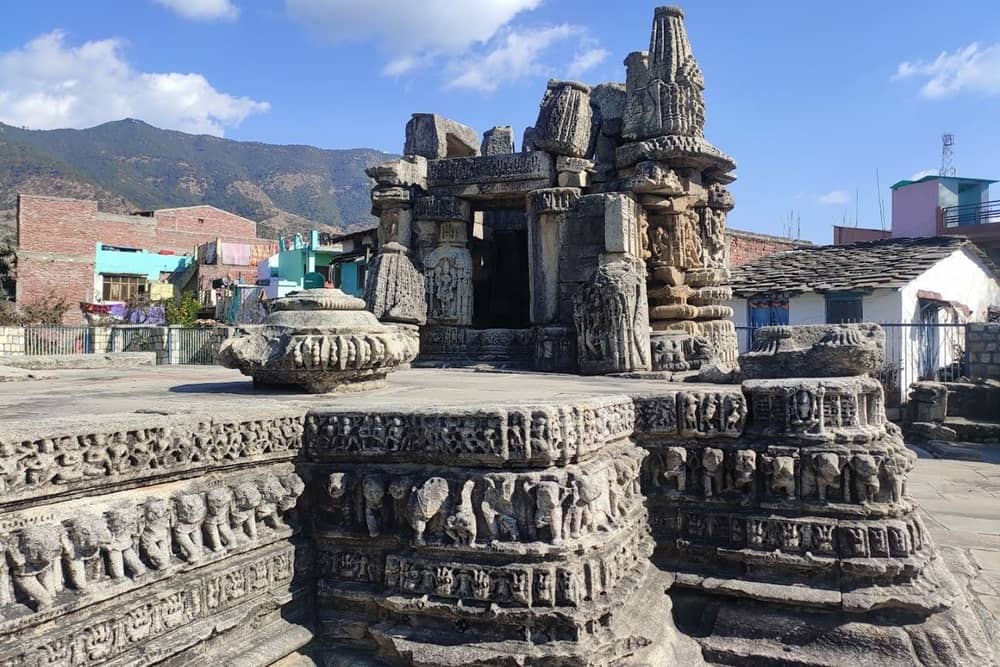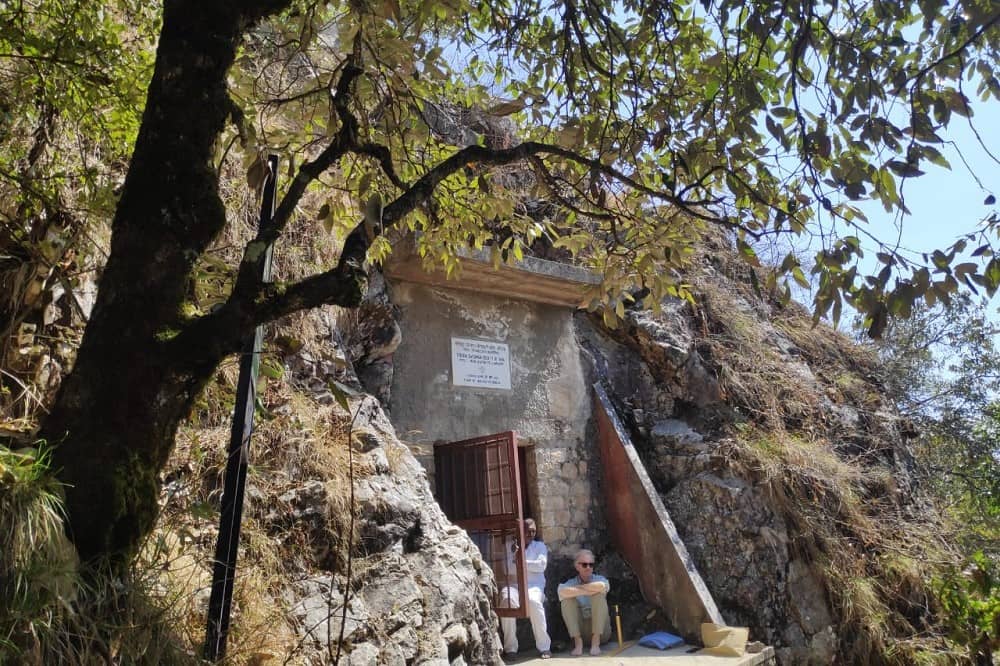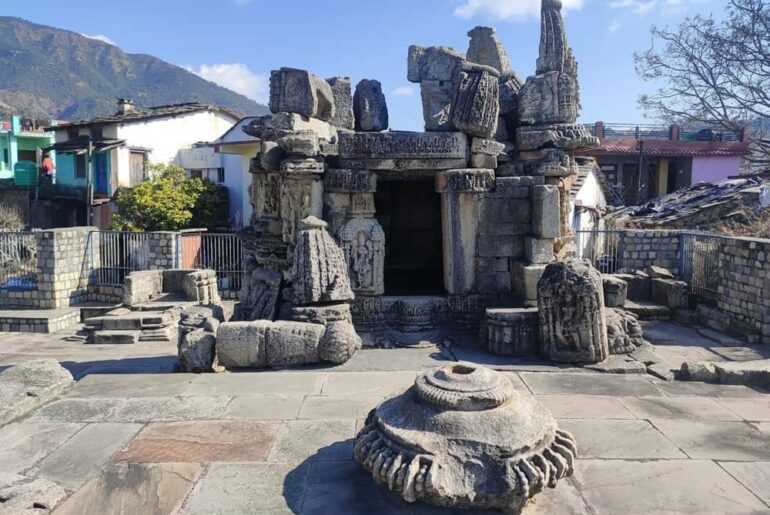Discover the Dwarahat “Uttar Dwarka”: a Town of Temples in Uttarakhand
The peaceful town of Dwarahat is located in the beautiful Kumaon hills of Uttarakhand. It sits at a height of 1,510 meters above sea level in the Almora district of Uttarakhand.
Dwarahat means ‘Way to Heaven’ in the local language. It is known for its ancient temples built by the Katyuri kings. The architecture of these temples resembles that of the Gurjari School of Art.
The cultural significance of Dwarahat has earned it the nickname “Uttar Dwarka,” in honor of Lord Krishna’s heavenly abode. The town is home to an impressive collection of 55 temples, which are skillfully divided into seven distinct groups.
Suggested Read: Kukuchina Dwarahat: Where Kriya Yoga Began in Uttarakhand

The village sits in the Almora District of Uttarakhand, It is approximately 15 miles (around 30 km) away from Ranikhet. This quaint town is home to three predominant types of temples: Kachari, Maniya, and Ratnadev.
The Village of Temples
The Gujjar Dev Temple, Kachari Dewal Temple, Mandeve Temple, Ratan Dewal, Mrityunjay Mahadev Temple, Badrinath Temple, and Kedarnath Temple are venerable creations of the Katyuri dynasty, built between the 10th and 12th centuries. During this era, Dwarahat held the prestigious position of being the capital of the illustrious Katyuri Dynasty.
The haunting remnants of the Gujjar Dev Temple, set against the backdrop of Dwarahat, serve as a poignant reminder of its historical significance.
Significance of Dwarahat
The spiritual importance of Dwarahat is beautifully described by Paramhansa Yogananda in his book “Autobiography of a Yogi,” especially in the chapter “Materializing a Palace in the Himalayas.”
Suggested Read – Yogoda Satsanga Sakha Ashram Dwarahat: A Tranquil Among Nature

Things To Do In Dwarahat
-
Yogoda Satsanga Sakha Ashram
Dwarahat is home to the Yogoda Satsanga Sakha Ashram amidst pine forests and towering peaks. This ashram was the residence of Sri Daya Mata, the head of YSS, from 1995 to 2010. It is a place of profound spiritual significance. Opt for meditation in the Ashram.
-
Mahavatar Babaji Cave
The path to the Mahavatar Babaji Cave on Pandukholi Hill has been restored for easier access by pilgrims. The trek, which takes less than an hour, passes through lush landscapes and monsoon streams feeding the Gogash River. This journey is also mentioned in “Autobiography of a Yogi.
-
Village Tourism:
This beautiful Kumaoni town is famous for its 52 exquisitely stone
carved temples dating back to the 11th century. Visitors can explore the area to learn about the local culture and customs. The friendly locals are welcoming and happy to share their folklores and stories.
-
Pandukholi Trek:
The village sits by lush greenery and rolling grassy hills. There are several walking trails like Pandukholi, Dunagiri Mata Temple etc. in and around the town.
-
Staying in Dwarahat
Due to its relatively unknown status compared to other tourist destinations, Dwarahat has few hotels and guesthouses. Only a handful of budget accommodations with limited amenities are available. Luxury accommodations with all facilities are not available here. Another option is to stay in Ranikhet, which is 33 km from Dwarahat.</p>
-
Dwarahat Food Guide
It is a small town without fancy restaurants or international cuisine. A few eateries and roadside food stalls offer popular North Indian and Chinese dishes. The local cuisine is worth trying, as it includes various Kumaoni dishes.
Suggested Read: Pandukholi Dwarahat: Mythical Trail at Mahavatar Babaji Cave

History
Historic coins found in Dwarahat suggest that the Kunindas, a tribal group, were the first to settle in the area. They dominated the land from 500 B.C. to 600 A.D., but declined with the rise of the Guptas. During the Gupta period, art, architecture, sculpture, paintings, and literature flourished.
Mythology
According to Hindu mythology, It is meeting point of the Ramganga and Saryu rivers. However, the jealous Kosi river created a feud between the two rivers by spreading a falsehood that the other wouldn’t show up for their rendezvous. When the truth revealed, the Ramganga and Saryu rivers cursed the Kosi river to wander alone for the rest of her life. As a result, the Kosi river flows alone, joined by no other stream.

Why Visit Dwarahat?
Maa Dunagiri Temple: Located 20 km from Dwarahat, this temple is believed to belong to the mountain brought by Pavandev (the god of wind). During Navratri, each night is dedicated to different forms of Goddess Durga. To reach the temple or Paban Maharaj Ashram, you need to climb 500 steps up a hill.
Ancient Temples: Dwarahat is famous for its group of 55 ancient temples. It is located at the intersection of the Ranikhet-Kasauni and Almora-Badrinath roads.
Educational Hub: Dwarahat is a popular center of education in Kumaon, with an engineering college, a polytechnic institute, and several schools.
Ashram Facilities: The ashram in Dwarahat offers food and lodging facilities. From the ashram, you can see Almora, Ranikhet, and Kasauni, as well as the mountain peaks of the Himalayas.
Festivals: Dwarahat celebrates festivals like Makar Sankranti, Basant Panchami, Herala and Bhaitauli, Olgia, Khatarua, Bat Savitri, and Ganga Dusshera, featuring music and dance.




Comments are closed.